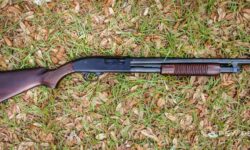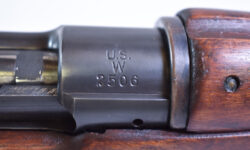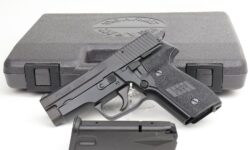WHAT IS A ZIP GUN ACTUALLY?
Commonly known as zip guns, improvised firearms are guns that are manufactured cheaply with common household materials, home manufactured parts, or 3D printed parts. And do you know that some zip guns are also made from legitimate gun parts that are salvaged from broken guns? If you want to find out more, this article will bring you the very definition of zip guns, how, where, and why they are made, what are the different types of zip guns, and most importantly whether you should or shouldn’t make and use zip guns. And without further ado, let’s get right to it.
What are Zip Guns and the Different Types?
Zip guns as I defined it above are firearms that are cheaply manufactured, often homemade. And it is illegal most of the time. To define zip guns in more detail, we need to know the most common types of zip guns which are:
Pen – Pen type zip guns are one of the easiest and most dangerous zip guns to make. As the name suggests, these firearms resemble a pen in size making them highly conceivable. And these are also extremely prone to failure due to their small size. Pen guns are made using an old ink pen or in some cases thin pipes that resemble pens. Then they use a spring or rubber band to propel the firing pin which is commonly small nails.
Some pen guns have a firing mechanism that you can actuate by pressing a button. While the most basic pen guns just attach a small lever on the spring which the user can pull back and release to flick the spring and firing pin forward.
Pipe – Pipe guns are the most famous zip guns, these rose to fame at the time of WW2 in the Philippines. The military and the people are insufficiently armed at the time and resorted to making zip guns, which are mostly pipe guns that fired shotgun shells.
These pipe guns are usually made out of two pieces of pipe, one-piece acts as the barrel on which the shotgun shell sits on, and one pipe acts as a receiver that has the firing pin. When combined all you need to do is to pump the barrel back like a pump-action shotgun to strike the shotgun shell into the firing pin.
3D Printed – The 3D printer is a clever invention of our modern world. And making zip guns is only one of the few things that 3D printing made easy. Some pistols, revolvers, and even high caliber firearms have their patents and parts list online, so once a person with a 3D printer got that, they can easily design parts that they can use to fix, assemble, or manufacture a whole gun. And there are even 3D printing methods that allow 3D printing metal, thus allowing it to make a high-quality zip gun, and perhaps making high caliber zip guns possible.
Repurposed – Firearms get broken all the time, especially for law enforcement. If they don’t dispose of it correctly, it might fall into the hands of a zip gun maker. What they do is either replace the broken parts to have a legitimate gun or salvage working parts from a lot of guns to assemble a ghost gun.
Sometimes, they would reverse engineer a gun to make their own guns. There is a famous cottage industry in the Philippines in a town where pipe guns were first made. They would replicate guns there that the guns were considered as ghost guns despite being homemade.
Some people even repurposed non-lethal weapons into ghost guns. A common base for these is stun guns and flare guns.
One of the most famous and legal ways to get a ghost gun is to buy an 80% receiver which is essentially the bare bones of a gun. And you can work your way up from there by buying and assembling gun parts yourself. This is legal for now and you can get parts and receivers online.
Cryptic – These types of zip guns are the most clever. These require a lot more engineering since these are disguised as everyday items, umbrellas, cellphones, briefcases, Zippos, belt buckles, even a cigarette box. You name it, there might be a cryptic zip gun matching it. There are even some legal cryptic guns in the market, the best and latest example being the IC380 which you can buy right now. It’s a foldable gun that has the same size as a phone when folded up. Another example is a briefcase made by H&K which you can fit and operate an MP5 inside.
Cryptic guns are the most dangerous since these made concealment for criminals possible. But they can also be the most reliable ones since they are commonly engineered to the max.
Should you try to make Zip Guns?
There are a ton of ways to make a zip gun and while it can be useful to know how to make a zip gun in extreme situations, you shouldn’t make these especially if you live in a place where it’s illegal to do so. And I know that we can’t stop you if you have the will to do so. But if you ever want to experiment with making one, don’t fire a zip gun as much as possible as most of these can only take a handful of shots before exploding into your hands. And if you think your zip gun is usable, then at least stay on lower caliber cartridges such as the .22LR.
Do you know there are a lot of ghost guns made by different countries in wartimes? The best example of this is the FP-45 Liberator made by the USA Military in WW2, this is a single-shot pistol firing a .45ACP cartridge. It came in a cardboard box together with 10 .45ACP rounds. And they sent these into enemy territories to give civilians and rebels to help them fight.
Conclusion
Making zip guns can be a ton of fun. Firing them can be a fun day or a scary day. And because of that, there are a ton of debates about whether zip and ghost guns should be legal. They shouldn’t be legal to fire if you ask me. But, making them, as of now is legal for many countries. And whatever gun law your country or state might have, you should always consider your safety first if you should ever encounter zip guns in your life. [sc name=”faq2questions” q1=”What are Zip Guns and the different types?” a1=”To define zip guns in more detail, we need to know the most common types of zip guns which are …” q2=”Should you try to make Zip Guns?” a2=”There are a ton of ways to make a zip gun and while it can be useful to know how to …” ][/sc]


